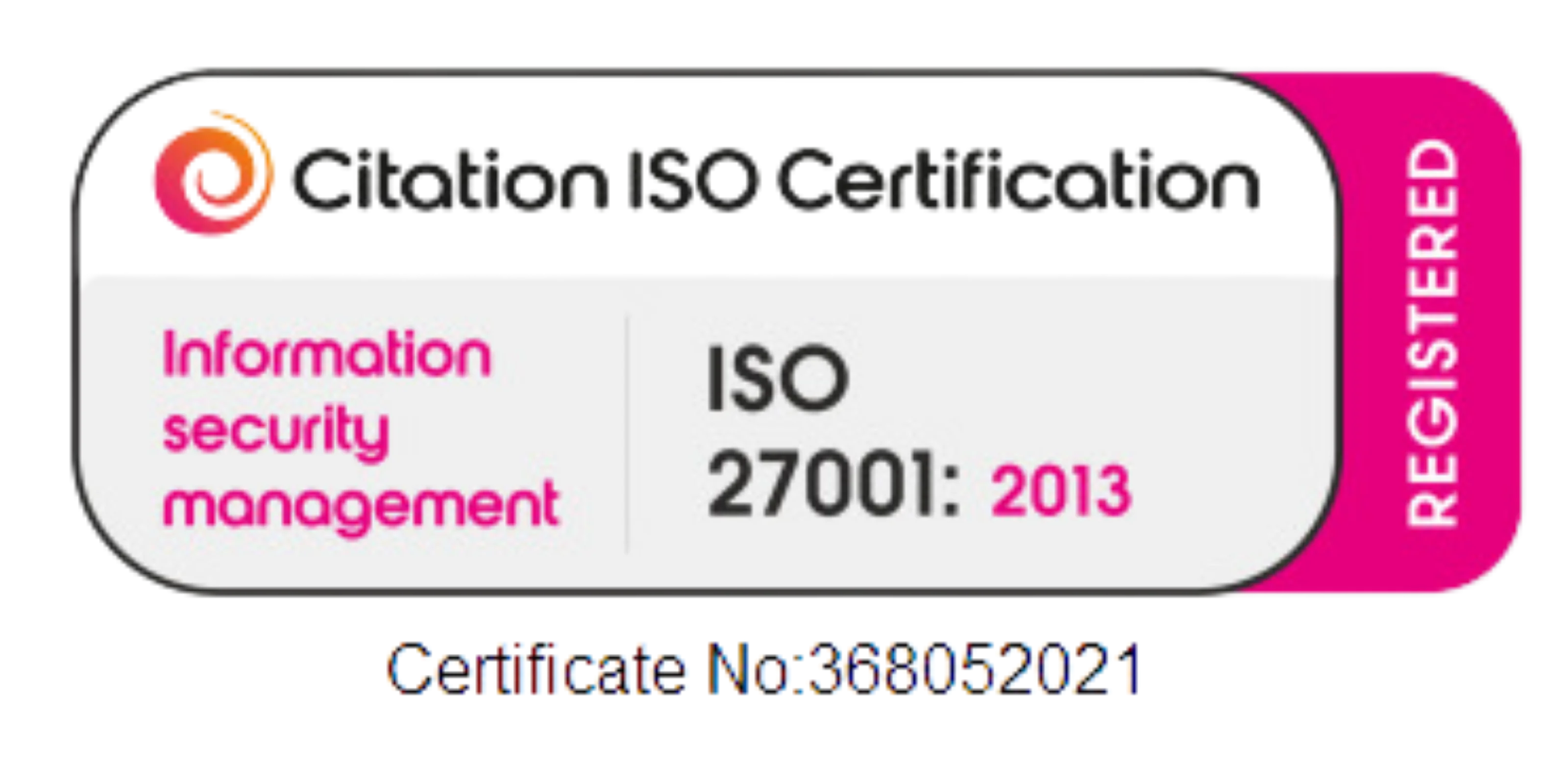Water bills to jump by 40% yet £900 million of water social tariffs unclaimed

Over five million eligible households are missing out on £900 million of water bill support each year. This blog explores how water bills are calculated and how they vary across companies, regions and households.
Water companies, councils and households each have a part to play in claiming water social tariffs ahead of a 40% expected rise to water bills from 2024.
-
- Companies: Can streamline the assessment for social tariffs to allow for automation by one click applications
- Councils: Can work with water and sewerage companies to use administrative data to auto-enrol eligible households onto discount schemes
- Households: Can contact their water and sewerage company or look online for a social tariff or support with debt repayments
Join our free webinar, How water companies are closing the unclaimed support gap, with guest speaker Lisa Connell, Northumbrian Water Ltd, on Wednesday 25 October from 10.30 to 11.45. View details and register here.
New proposals to increase household water bills by 40% under Price Review 2024
Water, ‘the forgotten utility’, has not had as much news coverage as its sister utility, energy. Yet, most household water bills have gone up by 10% from 2021 to 2023. By 2023, nearly one in four water bill payers were struggling to pay their bills.
Water companies are currently proposing a 40% increase to water bills by April 2025, growing the average annual bill from £450 to £680.
Table 1: Average sewerage and water costs from 2023 to 2025
| 2023 - 2024 | From April 2025 | Difference | |
|---|---|---|---|
| Water | £215 | £326 | + £111 |
| Sewerage | £233 | £354 | + £121 |
| Total | £448 | £680 | + £232 |
Discover Water: Annual bill, average annual water and sewerage charges across England and Wales households
*Forecasted total sewerage and water bill taken from the Guardian. Policy in Practice calculated the average price of the individual water and sewerage bills. Sewage costs typically 52% of the average water bill, whilst water costs typically make up 48% of the water bill.
The additional £232 in annual household bills will be put towards a £96 billion investment into water infrastructure to reduce pollution.
OfWat, the water regulatory authority for England and Wales, is currently reviewing proposed increases for the Price Review 2024 (PR24). In this review water companies set out new water and/or sewerage charges and outline their plans on climate change and household affordability over the next five years.
In some cases, OfWat has already mandated some companies to lower bills.
Low awareness of support schemes means £900 million in water social tariffs is unclaimed each year
Our report, Missing out: £19 billion in support goes unclaimed each year, found that nearly six million households are eligible for, but not claiming £900 million of water social tariffs each year.
OfWat reports that 3 in 10 customers were aware of financial support they could get from their water company. Only 7% of customers reported having received financial support.
Everyone should have access to affordable water. There are practical ways that water companies and councils can proactively support their customers.
In this blog, we look at how water bills are calculated and share what companies, councils and residents can do to make them more affordable.
How are water bills calculated?
Water bills consist of two bills: one for water and one for sewerage. Water charges cover a household’s water supply whilst sewerage charges cover wastewater removal and surface water drainage.
For both water and sewerage bills, households pay a standing charge and one of the following rates:
- Fixed rate: This is based on a property’s Rateable Value which is based on the letting value of your property up to 1990. This rate does not account for how much water a household uses. Households on fixed rate may not have a water meter installed to count water usage
- Metered rate: ‘Volumetric charge’ based on how much water a household uses
- Assessed rate: If your household is unable to have a water meter fitted, you will have an assessed water charge based on the type of property, the number of occupants and the average water bill of the company.
Household water bills can vary due to:
- Whether the water or sewerage supply is metered or unmetered
- Which water company and region the household is in
- Which part of the UK the households is in
Water bills can vary based on metered or unmetered rates
Whether a household has metered or unmetered water supply can impact its overall water bill.
Often companies will have different standing charges for metered and unmetered households.
Many companies report households could save money by changing to a water meter and, in some cases, a household may only be eligible for a social tariff if they have a water meter.
However, it is not always the case that a metered water supply will decrease household water bills. Households do not receive a cheaper standing charge or volumetric rate because they swapped to a meter. In some instances, the charges for a metered property can be higher than fixed rates.
Generally, metered supplies can reduce bills if a household does not use much water or if they become more conscious of how much water they use after installing the meter.
A good rule of thumb is to consider the number of people in the property in relation to the number of bedrooms. You may pay less if there are fewer people than bedrooms in your property.
Water bills vary by supplier
Regional differences in companies, their social tariffs and debt support can impact how much you pay on your water bill.
Our analysis shows the support offered by 19 different water and sewerage providers. Table 2 shows the standing charges for a metered property in 2023, discounts offered to households on the lowest incomes and their debt relief schemes.
Table 2: 2023 water social tariffs by water company
| Water or Sewerage Company | Standard rate metered charge 2023 / 2024 per year | Maximum discount offered for households on low incomes | Debt relief schemes |
|---|---|---|---|
| Affinity Water (water only) | Water: £28.92 | Affinity low-income fixed tariff: Annual water bill capped at £115.10 or £76.79 if you get Council Tax Support | Flexible payment plans: You can pay less than your water bill for a small period of time, and catch up later |
| Anglian Water | Water: £33.00 Full sewerage: £97.00 | Anglian Water LITE and Extra LITE: Up to 50% depending on income and eligibility assessment | Payment breaks: You can pay less than your water bill, or have a break from paying for a small period of time, and catch up later Reach:Out-Here to Help: Reach:Out has partnered with Anglian to listen and provide friendly support to customers in financial challenges |
| Bournemouth Water (water only) | Water: £25.26 | Bournemouth Water WaterCare: 15% to 85% off water bill | Restart: You pay your current bill, and make debt payments, and UU will match your payments £1 for £1 (or more) FreshStart: Immediate clearance of debts or short-term help with bill |
| Bristol Water (water only) | Water: £48.15 | Bristol Water Assist Scheme: From 20% to 88% off bill | Restart: You pay your current bill, and make debt payments, and Bristol will match your payments £ for £. After two years of consistent payment, Bristol will clear debts Payment break: Lower payments for a period to catch up later |
| Cambridge Water (water only) | Water: £45+ depending on meter size | Assure tariff: From 40% - 60% off bill base on length you have been with provider | Payment break: You have a break from paying for a small period of time, and catch up later Financial Hardship Fund: South Stafford Water Charitable Trust will provide a one-off grant to help with arrears |
| Dŵr Cymru | Water: £40.51 Full sewerage: £110.82 | Dwr Cymru HelpU tariff: Price cap of £291.01 on combined water and sewerage bill. (£124.01 for water and £167.29 for sewerage) | Customer Assistance Fund Debt Scheme: If you owe more than £150, you can get a monthly, fortnightly or weekly payment plan. After 6 months you get 50% off arrears Payment break: You can pay less than your water bill, or have a break from paying for a small period of time, and catch up later |
| Hafren Dyfrdwy | Water: £51.34 Water drainage: £24.76 - £74.27 depending on household type Used Water: £22.79 Highway drainage: £16.41 | Hafren Dyfrdwy Here2Help Scheme: From 30% to 90% depending on income and eligibility assessment | Debt Support-Matching Plus: If you are in arrears older than 1 year, and have paid no more than £60 last month, you qualify for the scheme. HD pays £20 each month to your bill as long as you pay £20+ |
| Northumbrian Water | Water: £45.09 Sewerage: £88.32 | Northumbrian Support Plus: Up to 50% depending on income and eligibility assessment Reduced bills: Up to 50% for households struggling to meet essential bills | Payment breaks: Short break from making payments, these postponed payments are spread across the year to help you catch up Money and Mental Health Live Chat: If you are struggling to pay your bills you can have a live chat or talk to NWL on WhatsApp |
| Portsmouth Water (water only) | Water: £28.48+ depending on meter or pipe size | Portsmouth Water Helping Hand: Annual bill capped at £82.73 | Arrears Assist: You have arrears greater than £300 and you are not making regular payments, Portsmouth Water will match your payments Payment break: No payments made for up to 6 months |
| SES Water (water only) | Water: £24.15 | SES Water Support Scheme: 50% off bill | Breathing Space: You have a break from paying for a small period of time, and catch up later |
| Severn Trent Water | Water: £34.06 Water drainage: 23.79 - £71.36 Used water: £23.30 Highway drainage:£16.41 | Severn Trent The Big Difference Scheme: Up to 70% | Financial Hardship Fund: If you have arrears with no way to pay, you can receive a grant Debt Support-Matching Plus: If you have arrears older than 1 year, and have paid no more than £60 in the last month. STW pays £20 each month to your bill as long as you pay £20+ |
| South East Water (water only) | Water: £32.36 | South East WaterHelp: Annual bill capped at £174.66 or £140.36 | Helping Hand: Grant given to clear water and sewerage debts |
| South Staffs Water | Water: £45+ depending on meter size Sewerage: £23.30 Surface water drainage charge: £23.79 - 71.36 | Assure tariff: From 40% - 100% off bill if receive specific benefits, or length of time you have been with provider | Payment breaks and flexible payment plans: You can pay less than your water bill, or have a break from paying for a small period of time, and catch up later Financial Hardship Fund: South Stafford Water Charitable Trust will provide a one-off grant to help with arrears |
| South West Water | Water: £44.37 Sewerage: £61.49 | South West Water WaterCare tariff: From 15% to 85% depending on assessment | Restart: You can pay current charges but not debts, SWW will pay £1 or more for each £1 you pay depending on length of time you have made payments FreshStart: Hardship fund to immediately clear debts, or provide help with bills Payment break: You can pay less than your water bill, or have a break from paying for a small period of time, and catch up later |
| Southern Water | Water: £20.96 Wastewater: £24.21 Surface water drainage: £23.00 Highway drainage: £11.50 | Southern Water Essentials: From 45% to 90% depending on income assessment | New Start: If you owe them money, and have not made a payment, you can receive a payment plan, or additional help |
| Thames Water | Water: £23.56 Wastewater: £71.05 (varies based on single or bulk metered household) | WaterHelp 50% off water bill depending on income and eligibility assessment | Customer Assistance Fund: You pay your current bill and make debt payments. Thames will match your payments £ for £. After two years of consistent payment, Thames will clear debts Breathing Space: 60 days to make payment without being chased |
| United Utilities Water | Water: £25.00 Sewerage: £4.98 Surface water drainage: £75.33 Highway drainage: £32.96 | Back on Track: Annual bill capped between £96 and £516 Help to Pay: For those receiving Pension Credit, annual bill capped at £270 or £384 | Debt Support-Matching Plus: You pay your current bill, and make debt payments, and UU will match your payments £1 for £1 (or more) Financial Hardship Fund: In exceptional cases you might qualify for a one-off payment to clear debts |
| Wessex Water | Water: £27 Sewerage: £63 | Wessex Assist tariff: Up to 90% water bill depending on advice from a third party advice agency Discount for low-income pensioners: Pensioners on state pension or Pension Credit get at least 20% discount | Restart: If you can afford your regular bills, and have debt you cant repay, you qualify for this scheme. You need to pay charges for the year and Wessex will match your contribution at year end. Debts are cleared after two years Flexible payment plans: You can pay less than your water bill for a small period of time, and catch up later |
| Yorkshire Water | Water: £32.63 Sewerage: £13.87 Surface Water: £54.89 | Yorkshire Water WaterSupport tariff: Annual bill capped at £350 | Community Trust: If you owe between £50 - £2000 and have at least one priority debt, one-off payment towards arrears Resolve: If you are on low income and have arrears over one year, you can get amount of arrears taken away with a payment plan you adhere to for two years Payment breaks: You can pay less or no payment for a small period of time, and catch up later |
Across companies, the standing charge for metered households over one year differs. Water standing charges can be between £25 to £50 per year whilst full sewerage can be between £60 to over £110.
All companies offer a WaterSure Tariff to help people who use a lot of water, receive certain benefits or have school aged children. On top of this, companies offer their own social tariffs. Each company has different eligibility criteria and different ways for a household to apply for support.
The least generous social tariff schemes might offer only 15% off a household bill while the most generous social tariff might cover all of a household’s water costs.
Six companies currently offer price caps, which prevent a household’s water bill from going above an amount. The most generous caps keep annual bills as low as £96 per year.
Companies offer various levels of debt support. All companies have WaterDirect, a service where water bills are taken from benefits if a customer has some level of water bill arrears.
Some companies advertise hardship funds for one off payments to clear water arrears. Some companies match payments towards arrears. While others only advertise payment plans or breaks.
Differences in water social tariffs can impact households on the lowest incomes
Some of the variations in support are due to differences in standing charges. But even the most generous discount or debt scheme may not always offset higher standing charges for water bills.
It is helpful that companies have the flexibility to design discount schemes to address their local needs. They have the ability to survey customers about their tariffs through willingness-to-pay research, and then set rates accordingly.
However, regional differences in support can create postcode lotteries for the available support and unequal conditions for access to this support.
One study found that customer research on social tariffs might not always detect the real level of customer needs. Results can be skewed by company research practices.
Additionally, companies operating in high income areas with smaller pockets of deprivation may have a hard time identifying the needs of lower income customers who occupy a smaller share of the area.
Water bills vary based on the part of the UK the household is in
National level differences in how water is provided to customers by companies can have an impact on household financial resilience.
- England and Wales: Water and sewerage is privatised. There are 19 water and/or wastewater companies responsible for the two countries. The water or sewerage company a household uses is based on location. Families cannot choose another company. They must use the one that services their neighbourhood. As mentioned, this can create postcode lotteries in the levels of support for families
- Scotland: Water is provided mainly by Scottish Water. The costs are included in Council Tax bills, paid to the Council and then passed on to Scottish Water. Unmetered charges are based on Council Tax bands whilst metered households pay Scottish Water directly. Households claiming Council Tax Support may also receive a reduction of up to 35% on their water and sewerage bills through the Water Reductions Schemes. Customers do not need to apply for this, it is applied automatically
- Northern Ireland: Water is provided by Northern Ireland Water, a government owned company since 2007. A household pays Northern Ireland Water directly. There are no advertised tariffs
The Scottish approach to social tariffs is notable. Automating applications for water social tariffs with Council Tax Support (CTS) effectively targets households on the lowest incomes and overcomes the barriers to benefit take up. Although low take up of CTS can impact the take up of water social tariffs, this method is a positive step to ensure all households are opted into this support.
For England and Wales, taking steps to automate the application of water social tariffs could increase the take up of water social tariffs.
How to tap into cost saving approaches to water bills
Councils, water companies and households can help with the rise in water costs.
What councils can do
- Begin conversations with water and sewerage companies about social tariffs, and remove the need for customers to apply. Councils can use administrative data and analytical platforms like Policy in Practice’s Low Income Family Tracker (LIFT) platform to identify households that are eligible for and missing out on social tariffs. The Scottish model provides an example of how this can be done on a national scale
- Use discretionary payments like the Household Support Fund (HSF) or other Local Welfare Assistance schemes to help households in water poverty but not eligible for water tariffs. Our LIFT platform is a powerful tool many councils are using to identify households for discretionary support
What water companies can do
- Encourage complete applications, streamline the application journey and increase operations capacity. Anglian and Northumbrian Water have introduced the Apply Once process via the Better Off Calculator and have reduced dropouts from 35% to 0%. This newly improved application journey allows a customer to seamlessly apply directly to Anglian Water’s social tariff scheme at the same time as completing a benefits check. The self serve tool means customers can submit an application in their own time and discover additional support they can access right away. The water companies have increased their operations capacity and significantly increased the number of eligibility assessments they carry out by removing time spent transferring information from paper based forms or different systems
- Empower teams to offer holistic support. Our Better Off Calculator includes information on national and local government benefits to help to maximise customers’ income beyond the support provided by a water company alone. Social tariff schemes are helpful, but are only one part of the picture
- Prevent and deal with debt. The Better Off Calculator has built in budgeting features that can be used to assess eligibility for reducing bills, as well as for reviewing existing debt situations, all against a backdrop of income maximisation and understanding a customer’s ability to pay
What households can do
- Contact your water or sewerage company for social tariffs and debt support. Most have charitable funding, and can provide a one-off grant to pay your bills. For households serviced by Northumbrian Water, or Anglian Water use the Better Off Calculator to work out your eligibility for a water social tariff
Join our free webinar: How water companies are closing the unclaimed support gap
Wednesday 25 October from 10:30 to 11:45
Over five million eligible households miss out on £900 million in water bill support annually.
OfWat revealed in May 2023 that 1 in 4 water bill payers struggle to cover their bills, a 15% increase since March 2022. Only 7% received financial support, and 3 in 10 knew about available assistance.
As water bills are expected to rise by 40% in 2024, the webinar explores insights into the changing landscape of household water bills over the next five years due to the Water Price Review 2024.
Lisa Connell, Customer Service Manager at Northumbrian Water, joins our policy experts to share how one leading water company is actively supporting vulnerable customers.




